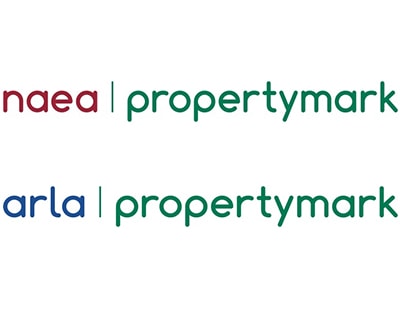The body said that measures in the recently released Levelling Up White Paper to address the issue were welcome, but urged ministers to go even further and 'explore a scheme that targets owners of empty homes'. This is similar to the one in the White Paper that sets out an intention to give councils powers that will place a requirement on landlords to find tenants for long-term vacant commercial properties in town and city centres. This would compel owners to use the property to live in, rent out or sell it.
How big is the problem?
The number of long-term empty homes in England stands at 238,306, according to the latest figures from Action on Empty Homes. This is not very far off the 300,000 homes per year that the government is committed to building to keep pace with demand. The number of empty homes is some 20% higher than at the end of the last national Empty Homes Programme.
The UK government's target is to build 300,000 new homes a year by the mid-2020s - a number it is currently missing by a fair distance. The most recent data for the year ending September 2021 shows that 228,370 new build homes were completed.
A lack of supply in both the sales and rental markets is a major issue for the property market, with Propertymark member agents reporting high demand outstripping historically low supply across the country.
“Empty homes are a wasted resource and at a time when the housing market is in the grip of unsustainably low levels of stock for sale and for rent, it makes no sense that there are thousands of homes sitting vacant," Timothy Douglas, head of policy and campaigns for Propertymark, commented.
“We have long called for the reintroduction of a national programme of funding because of the much-needed incentive that it can provide to get these properties back into the market for would-be home buyers or landlords."
He added: "The UK government has set itself a target of building 300,000 new houses a year, but it must not miss opportunities to do more to better manage the growing level of existing housing stock that is currently being underused, or not used at all.”
Salford City Council this week called on landlords and investors of empty properties to take the necessary actions to get their homes back into use as part of National Empty Homes Week.
The week (which lasts from Monday 28 February until Sunday 6 March) is a national initiative helping to promote local councils’ work to bring empty properties into use, with the latest government data showing that more than 260,000 properties in England have stood empty for more than six months.
Salford itself is currently home to 2,392 properties which have been empty for more than six months, with the council continuing to proactively work with landlords and investors to bring these properties back into use as soon as possible. An empty property, if poorly maintained, can easily deteriorate and become a source of nuisance to neighbours and an eyesore for an area.
“Salford is in the midst of a housing crisis and we take the issue of empty properties extremely seriously as we know that there are so many families and residents in our city that could make them a home of their own," Deputy City Mayor Councillor Tracy Kelly, Lead Member for Housing, Property and Regeneration, said.
She added: “Our dedicated team deploy a wide range of tactics to bring these homes back into use and we have strong partnerships with local housing associations who help us refurbish them and find new tenants who are in need of a good quality home.
She continued: “We offer landlords a number of options to find a solution for an empty home and we will not hesitate to use enforcement powers, such as serving improvement notices to ensure the home is habitable. I would urge landlords to work promptly with our teams to ensure that properties can be ready for use as soon as possible.”
One of the measures available to landlords and property investors in Salford are grants from the council’s 'Private Sector Leasing Scheme', which enable them to refurbish the property to a decent standard. The council says the grants are subject to a 30% contribution from the owner and on the condition that the property be managed by a social landlord for five years and let at affordable rent levels.
Investing in an empty home - what are the pros and cons?
We've previously asked whether investors should consider investing in empty homes in the capital, where unoccupied homes are a particular issue. Potential advantages include interest-free loans being offered by councils to help refurbish or convert empty homes into good-quality rental accommodation. Many local councils also have schemes of some description in place to bring empty properties back into use.
The possible downsides are the costly remediation and renovation works that could be required to bring an empty home back into use, particularly if it's really dilapidated or completely uninhabitable. An uninhabitable home is likely to require some form of specialist mortgage - typically a stage-payment mortgage - which could be harder to come by.
It's recommended that investors do thorough due diligence before considering investing in an empty home, because of the potential issues that could arise.
On the other hand, there are those investors who are criticised for buying up homes as an investment, only to then leave them empty. This is an acute problem in London, where many wealthy overseas investors and institutional funds purchase homes, but is spreading to other major UK cities as well.
Action on Empty Homes, with funding from Trust for London, released a report last year which found that wealth investment was locking Londoners out of housing.
Its key findings were that London is building the wrong housing to resolve the housing crisis, homelessness is rising at the same time as empty homes numbers shoot up and more second homes and Airbnb-ready flats are built in the capital, and that a wide range of voices are saying it is time to stop building yet more empty homes.
It added that the climate crisis shows us why we need to retrofit not demolish council estates and take a ‘RetroFirst’ approach to development, including retrofitting long-term housing stock for a more sustainable future.
The report's key recommendations were as follows:
-
London boroughs need to take action on empty homes, adopting more robust strategies to challenge emptiness of all types.
-
Bringing wasted empty homes into use is critical for sustainability and a RetroFirst approach is crucial in addressing our climate emergency.
-
Airbnb needs tighter regulation and data sharing with borough enforcement teams.
-
A vacancy tax is needed.
-
The second homes category must be reformed or abolished.
-
A transparent national register of residential property ownership and usage is required.
-
A new government-funded programme of support for enforcement, incentives and investment at local level is needed.
-
Local Planning must be meaningful, informed and not undermined by national planning policy.
It's hard to know exactly how much of a problem Buy-to-Leave is, given exact numbers on the scale of the issue are hard to come by, but it's likely a big percentage of the empty homes in London are as a result of wealthy investors buying up assets that they have no intention of living in or renting out.
Until such a problem is tackled, and the issues outlined by Propertymark are addressed, the empty homes problem across the UK is likely to continue.









.png)










Join the conversation
Jump to latest comment and add your reply
The population has grown 9m in the past 20 years. That's almost 500,000 new residents every year, and the rate has been growing starkly since 2005. What good is 300,000 extra houses a year, when they aren't building at that rate now, aren't hitting the targets, and the vast majority of them are built for the aspirational middle classes?
Laughable.
Your right, but the situation is actually worse. The vast majority of new builds are apartments, predominantly in our major cities. Councils (predominantly Labour) have allowed developers to abnegate their responsibilities for s.106 and social housing for spurious reasons, and those extremely expensive apartments are then sold to offshore investors. The rents are extortionate and many are left empty to appreciate in value or let on e.g. airbnb, yet the councils don't hit them with equally extortionate council taxes., and when they are sold, the government doesn't what should be a considerable chunk of CGT.
I won't even get into the massive impact illegal migrants and 'real' refugees is having.
Please login to comment